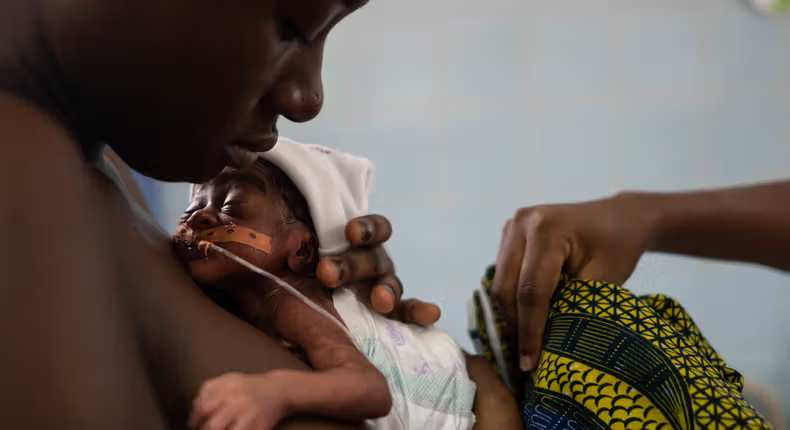< 1 mn read
Skin-to-skin contact, often referred to as “kangaroo care,” involves placing a newborn baby directly on their mother’s bare chest right after birth. This practice is crucial for several reasons, and here’s why it’s so beneficial:
- Promotes Maternal Bonding When a baby is placed on their mother’s chest, it triggers natural maternal behaviors. The mother experiences a surge of maternal hormones, which enhances her connection with the baby. This interaction includes smelling, stroking, and engaging with the infant, fostering a strong bond.
- Facilitates Breastfeeding Skin-to-skin contact helps the baby find the breast and initiate breastfeeding naturally. Babies often make small movements, crawl towards the breast, and start breastfeeding on their own. This process helps establish breastfeeding more smoothly and reduces issues related to feeding.
- Regulates Vital Signs The close contact helps regulate the baby’s heart rate and breathing. It also promotes better oxygen saturation and helps to stabilize the baby’s body temperature, which is particularly important for preterm or low-birth-weight infants.
- Enhances Physical Health Skin-to-skin contact stimulates digestion and boosts the baby’s immune system by allowing friendly bacteria from the mother to colonize the baby’s skin. This offers protection against infections and contributes to overall health.
- Improves Maternal and Infant Outcomes For both the mother and the baby, this practice can lower cortisol levels, promote relaxation, and even shorten hospital stays. It can also increase milk volume if the mother breastfeeds after this contact, as the milk contains up-to-date antibodies.
- Supports Emotional Well-being This bonding time helps both the mother and baby to relax and feel more comfortable. It strengthens their emotional connection, which is beneficial for the mental health of both parties.
In summary, skin-to-skin contact immediately after birth is a critical practice that supports the baby’s health, facilitates breastfeeding, and strengthens the bond between mother and child.

